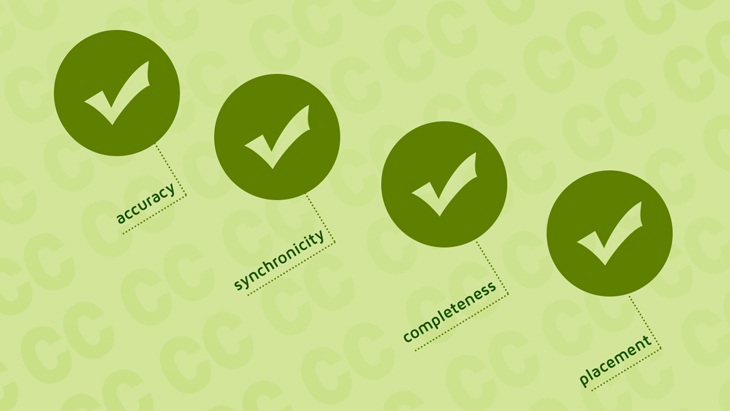Closed captioning was designed to make video programming accessible for deaf and hard of hearing viewers.
Sadly, the inconsistent quality of some closed captioning hinders the benefit to the viewers that need it most.
Issues such as spelling errors, improper timing, and poor placement of the captions make it difficult for viewers to follow what is happening and being said onscreen.
The Importance of Quality Closed Captioning for Accessibility
Although television programmers have been required to provide closed captioning since 1997, there has been a glaring lack of enforced quality standards.
Many television producers view the cost of closed captioning as a tax by the government rather than a way to include all of their potential audience in the viewing experience.
When producers view closed captioning primarily as a “burden,” they often hesitate to push for better quality.
Overcoming the Challenges of Inconsistent Captioning Quality
Now, the Federal Communications Commission is directly addressing the issue of quality.
The FCC unanimously voted to adopt new standards for closed captioning on television programming.
The new rules aim to motivate video programming distributors to make their best efforts in improving closed captioning quality.
The FCC’s New Standards for Closed Captioning Quality
The new standards focus on quality improvement to post-produced closed captioning in four specific areas:
1. Accuracy: Captions That Reflect the Dialogue
Captions must identify the speakers and reflect the dialogue, sounds, and music of the programming.
2. Synchronicity: Timing Is Key for Viewers
Captions must coincide with the corresponding programming and appear at a readable speed for viewers.
3. Completeness: Full Captions for Full Access
Captions must run for the entirety of the program.
4. Placement: Ensuring Clarity Without Obstruction
Captions must not obscure essential on-screen information.
The Impact of FCC Captioning Standards on Accessibility
With improvements to these four areas, the FCC believes that video programming will be “fully accessible to people who are deaf and hard of hearing through the provision of closed captions, and that these standards will ensure that the visual information received through captions is consistent with the information provided through the audio track of the programming.”
The Future of Captioning: Higher Standards for All Programming
The rule revisions for captioning quality standards and best practices will take effect on January 15, 2015, or following the approval by the Office of Management and Budget, whichever is later. To read the full Closed Captioning Quality Report and Order from the FCC, click here.

Ryan Hawthorne
Ryan is the Operations Manager and the reason we can brag about the quality of our captions. He isn’t shy of high standards or quick turnarounds. He makes sure your project looks perfect every step of the way. When Ryan isn’t captioning, he’s spending time with his family as a new father.


